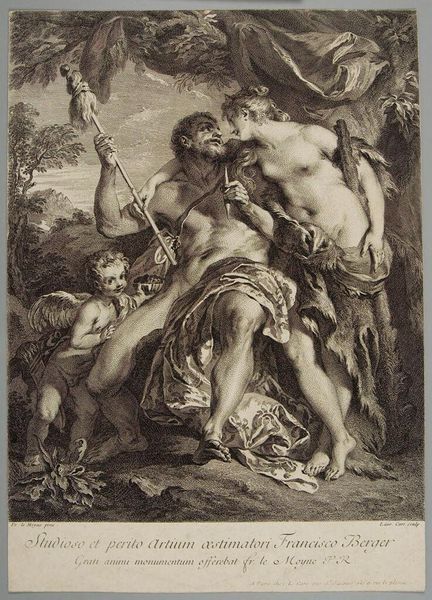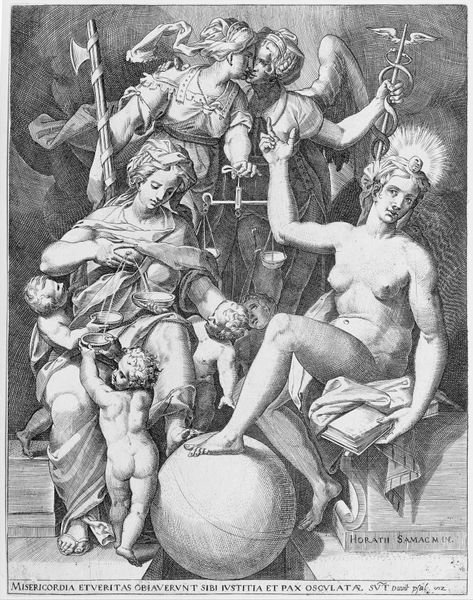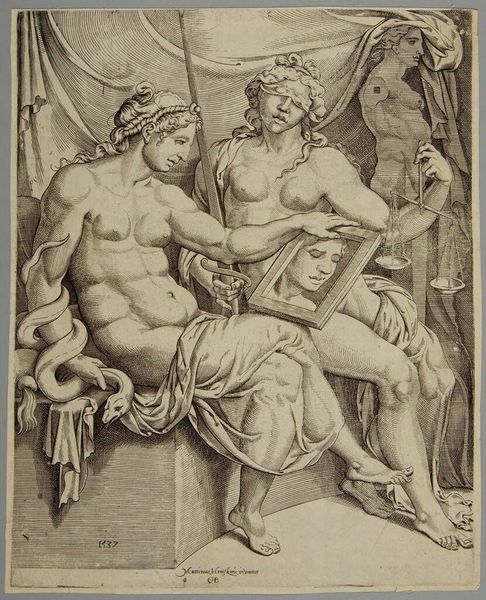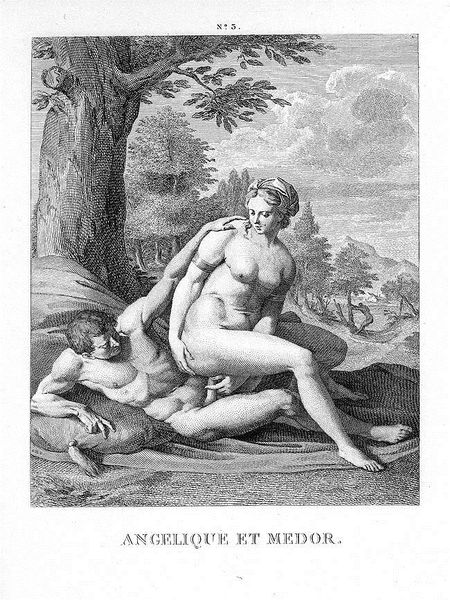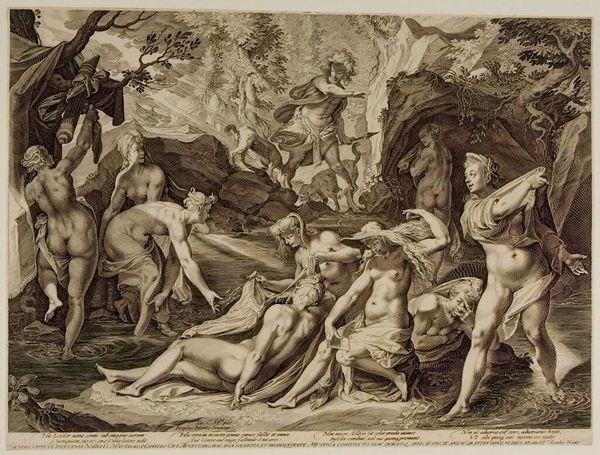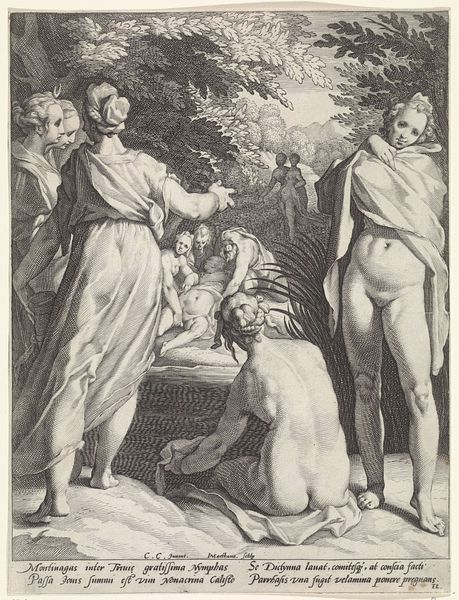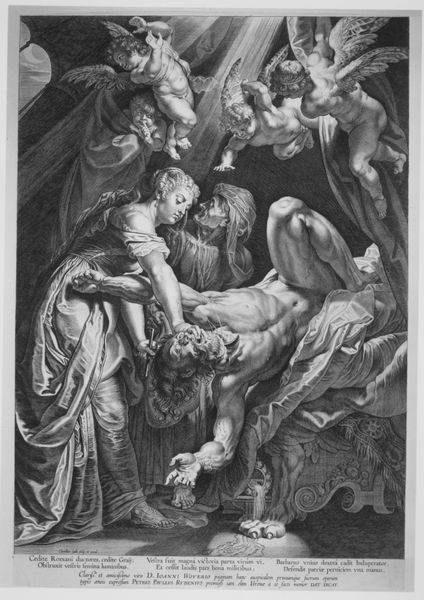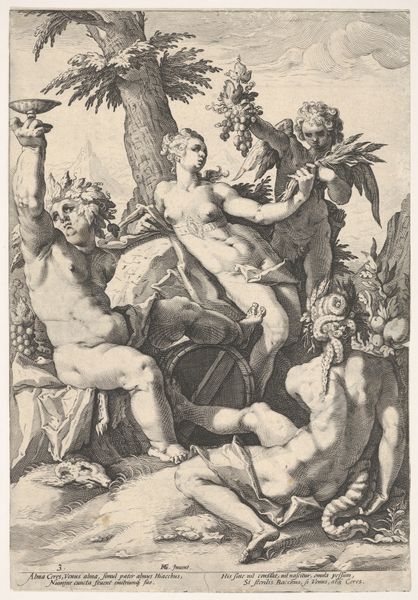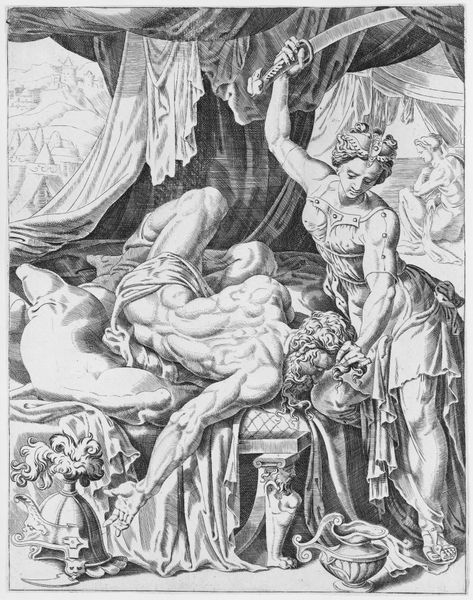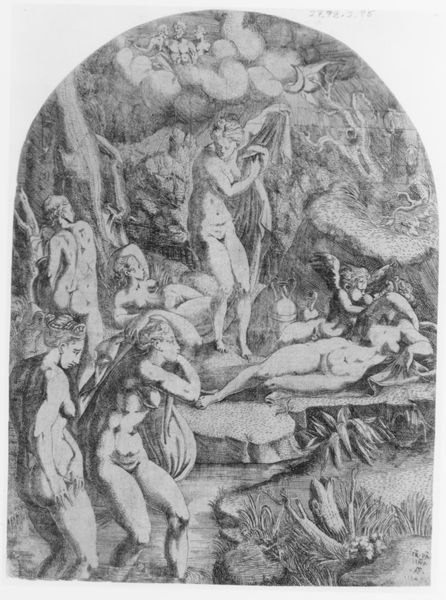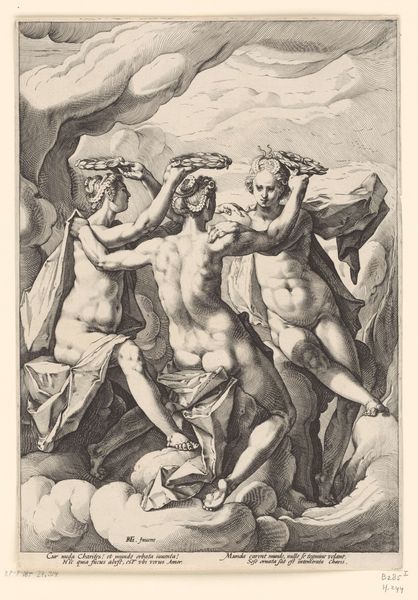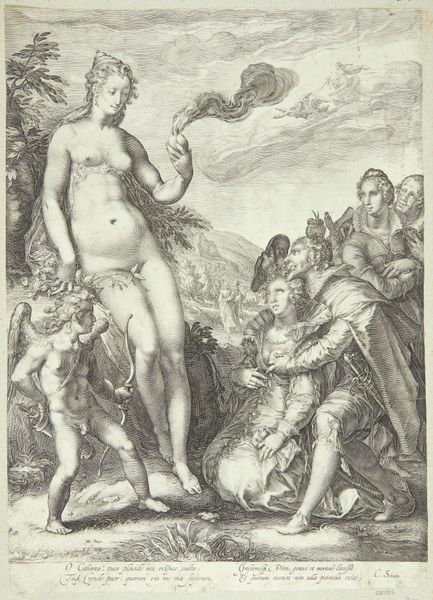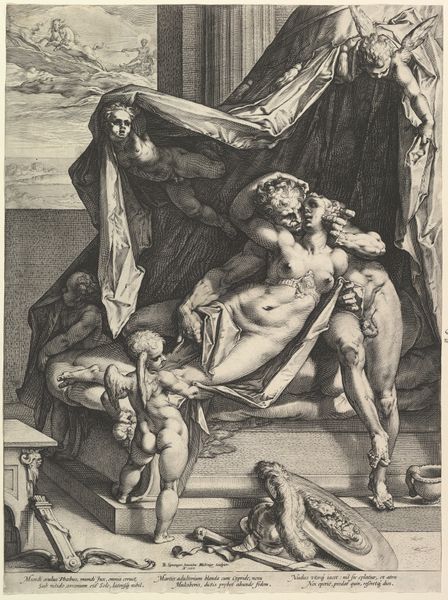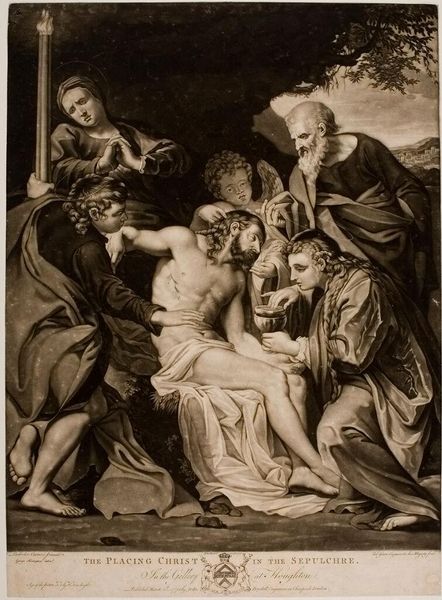
drawing, print, etching, engraving
#
drawing
#
allegory
# print
#
etching
#
mannerism
#
figuration
#
11_renaissance
#
black and white
#
genre-painting
#
history-painting
#
nude
#
engraving
Dimensions: sheet: 16 7/8 x 12 1/2 in. (42.9 x 31.8 cm)
Copyright: Public Domain
Jan Saenredam made this engraving of Venus, Ceres, and Bacchus in the late 16th century. As an engraving, its appearance is entirely dependent on the engraver's tools, and their skilled manipulation. The image is made by incising lines into a copper plate. The depth and density of these lines determine the tones, and create a tonal range from light to dark. Saenredam likely used a burin, a handheld steel tool with a sharp, angled point to carve the intricate network of lines. Note the close, regular hatching in the darker areas, building up a rich velvety blackness. This contrasts with the lighter areas, where the lines are more widely spaced and delicate. It's worth remembering that this kind of printmaking was a highly specialized craft. It required years of training to master the techniques of line-making and shading. Also, prints like this one were luxury items. They served to disseminate classical imagery and were collected by wealthy patrons, underscoring how the value of the image is directly linked to the labor involved in its production.
Comments
No comments
Be the first to comment and join the conversation on the ultimate creative platform.
